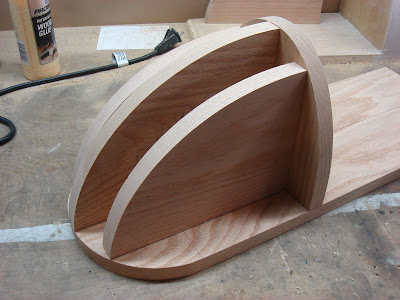I haven't been able to spend much time on this project lately but I have made a little bit of progress on the tail hoop. I wasn't thrilled with the battery tray from BCR so I opted to build my own. I started with a DIY tail hoop from Dime City Cycles. It seemed a little pricey but it saved me the hassle of finding a local machine shop to bend a pipe for me.
 |
| The frame hoop from Dime City Cycles. |
I don't have a chop saw so to make sure I got straight cuts I used a regular old pipe cutter.
 |
| Cut to length with a pipe cutter. |
I also cut some 2" pieces of 7/8" OD pipe to fit inside the ends of the hoop and frame so I can plug weld the pieces together. The inside diameter of the frame tubing is nearly 2mm larger than the DCC hoop and a bit less than 7/8" so I had to bore out both the frame and the tail hoop with a step bit.
 |
| Pipes need to be plug welded before adding the hoop. |
I want the entire tray and battery box to be removable so that if I ever decide to change the seat I have the ability to shift the position of the battery box if necessary. I tacked in two pieces of 3/4" square tubing that will serve as mounting points for the bottom tray and battery box.
 |
| Getting the angles and curves just right took quite a bit of patient grinding. |
I'm going to weld a 3rd piece of square tube to the frame. This should provide more than enough support and mounting points for everything.
 |
| Checking the measurements before tacking in the 3rd piece of square tube. |


















































